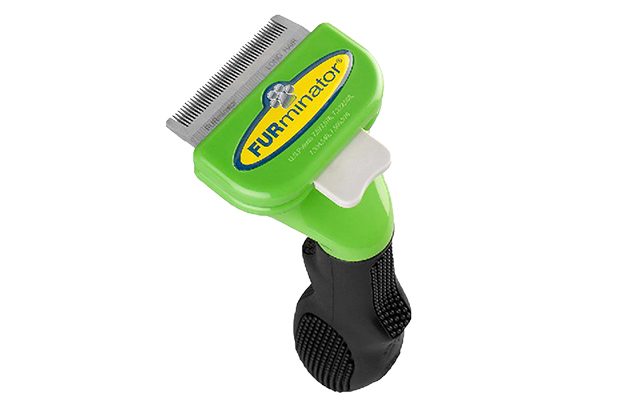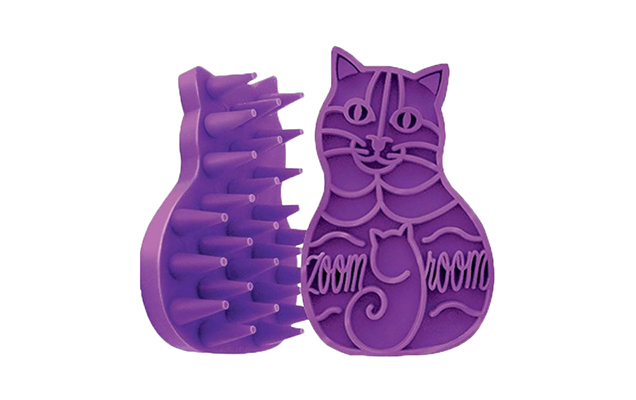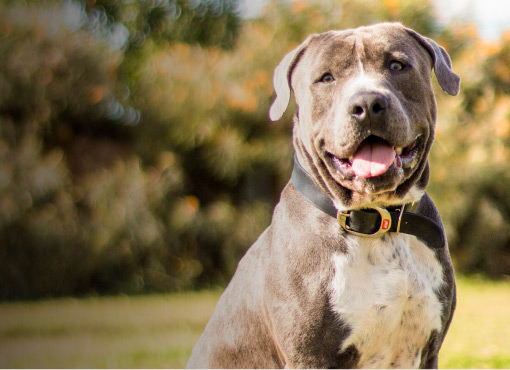2. Introducing a brush
Once your companion is happy to be touched and handled, we can introduce the brush. Ideally, it’s good to start your pet with a softer brush – this will be the most comfortable, and will help your pet associate good things with brushing. As your pet becomes more used to brushing, it may be good to transition them to a harder brush as these can be more effective. But before we get to the actual brushing, let's figure out which brush will get the job done!
The ideal brush will vary for different types of pets. As a rule of thumb – pets with double coats, thicker, or longer fur require more effort and potentially more than one type of brush to correctly groom, while shorthaired pets may require only one.
For dogs:
Short haired dogs.For these types of doggos a bristle brush alone will probably do the trick. Bristles that match the length of the fur are a good choice – shorter bristles for shorter hair, longer bristles for longer hair.
Long haired dogs. For these types, you may want to use a few brushes. A slicker brush can be great for unmatting hair and helping rid loose hair. Grooming combs are useful for long thick haired dogs and dogs with undercoats. For combs, start with wider teeth ones to remove tangles before using finer spaced ones (like flea combs) to remove dirt. If your dog sheds a lot, a shedding brush could be a good addition. Check out some options here at RSPCA World for Pets.

For cats:
Shorthaired cats. Similarly, shorthaired cats may only need a bristle brush. However, slicker brushers can be useful to control shedding (in both longhaired and short) and flea combs for removal of fine dirt (in both types of cats).
Longhaired cats. Moulting combs are great for detangling hair in thinner-haired longhaired cats, while grooming combs are useful for those long thick coats. Slicker brushes are good de-shedders. Bristle brushes are a good finisher for these cats.
Check out some brushes to groom your cat from RSPCA World for Pets.
If your cat or dog can’t stand brushes or combs – try a rubber brush as these can be a lot more comfortable for your pet.






